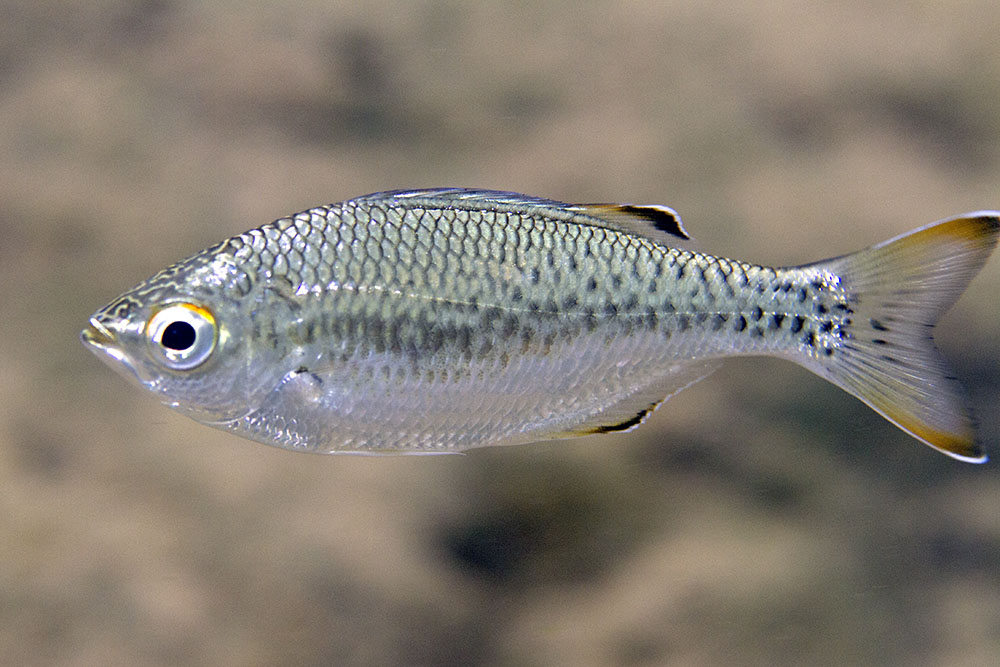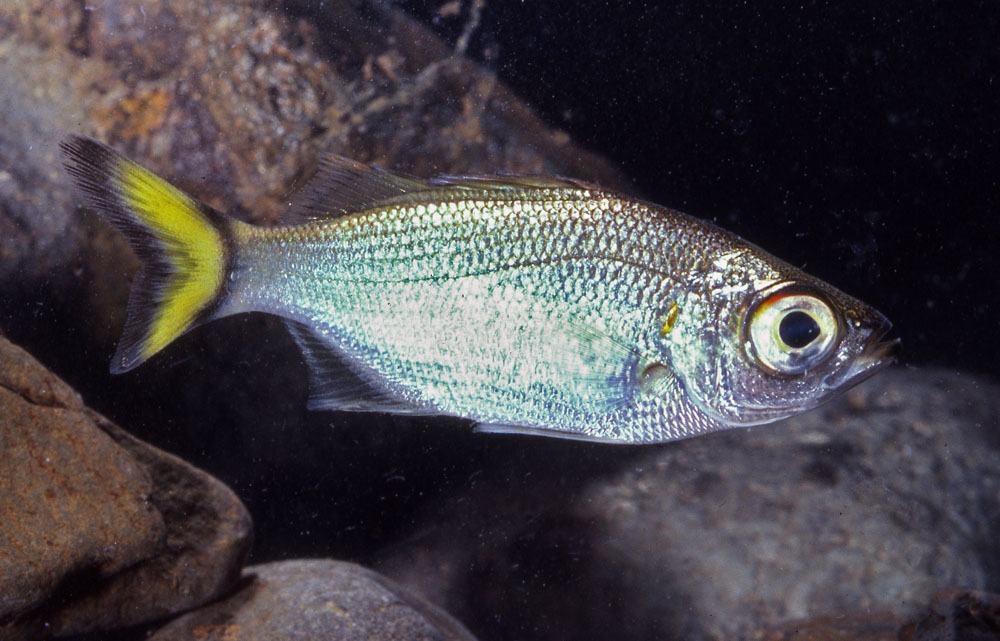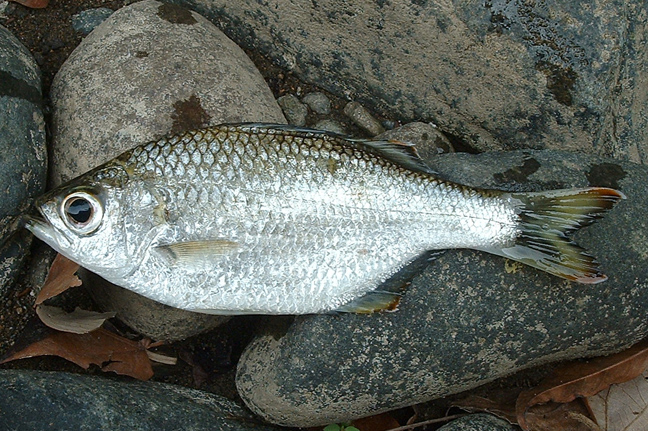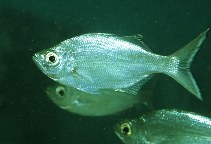
Kuhlia mugil
FAMILY
Kuhliidae
TAXONOMY
Kuhlia mugil Forster, 1801, Tahiti, Society Islands, Polynesia.
OTHER COMMON NAMES
English: Barred flagtail, flagtail aholehole; French: Croco drapeau;
Spanish: Dara bandera.
PHYSICAL CHARACTERISTICS
Standard length 15.7 in (40 cm). Body oval shaped and compressed,
the color silver, with black and white markings on the
caudal fin. There are 10 spines and 9–11 soft rays in the dorsal
fin, and 3 spines and 8–10 soft rays in the anal fin. The caudal
fin is forked.
DISTRIBUTION
Widespread in the Indo-Pacific, ranging from the Red Sea and
East Africa, including Madagascar, east to the Galбpagos Islands,
Mexico and Ecuador; also north to southern Japan, and
south to Australia and Lord Howe Island. Occurs throughout
Micronesia and most of Polynesia as far as Rapa.
HABITAT
Inshore waters along rocky and coral reefs, cliff faces, and
rocks. Also enters estuaries and freshwater. Juveniles enter
tide pools.
BEHAVIOR
Forms tightly packed schools that swim close to structure, generally
just below or in the surge zone.
FEEDING ECOLOGY AND DIET
Feeds upon small swimming crustaceans in the water column.
REPRODUCTIVE BIOLOGY
Not well known. Probably spawns in estuaries or inshore, perhaps
in schools, year round in the tropics but seasonally at
higher latitudes. Eggs and larvae are pelagic.
CONSERVATION STATUS
Not listed by the IUCN.
SIGNIFICANCE TO HUMANS
Of minor importance as a commercial and subsistence food
fish. Collected for bait and for aquaria.
Photo Gallery of - Flagtail kuhlia





 Animalia Life
Animalia Life